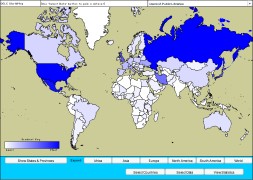Here is something I saw on another blog that might be useful for future projects. Always looking for access to no-cost/low-cost data 🙂

Geospatial information firm GeoEye announced that it has formed a non-profit foundation to promote teaching of geospatial information technologies as well as assist humanitarian and environmental research studies.
The GeoEye Foundation intends to provide free archive satellite imagery to students and faculty at select educational institutions. Analysts or researchers at non-governmental organizations can also apply for the free imagery. The foundation will make available to the selected researchers, some of GeoEye’s 278 million square kilometers of satellite imagery. To obtain the free imagery, an applicant must submit an application outlining their research goals and objectives.
Matt O’Connell, CEO of GeoEye said that he hopes the program will help attract more young people to university’s geospatial programs. “One of the biggest challenges facing our rapidly growing industry is attracting new employees fast enough,” he said. “We’re looking forward to seeing the exciting and groundbreaking work that will arise from GeoEye Foundation’s partnership with universities and institutes.”
The GeoEye Foundation has already provided satellite imagery to assist in the study of urban sprawl in Mexico, land-use planning for Jerusalem, and study polar ice in Antarctica. If you’ve got an idea for a study you think could us some free satellite imagery, contact Mark Brender (info@geoeyefoundation.org) to find out more.
Via GeoCarta blog



